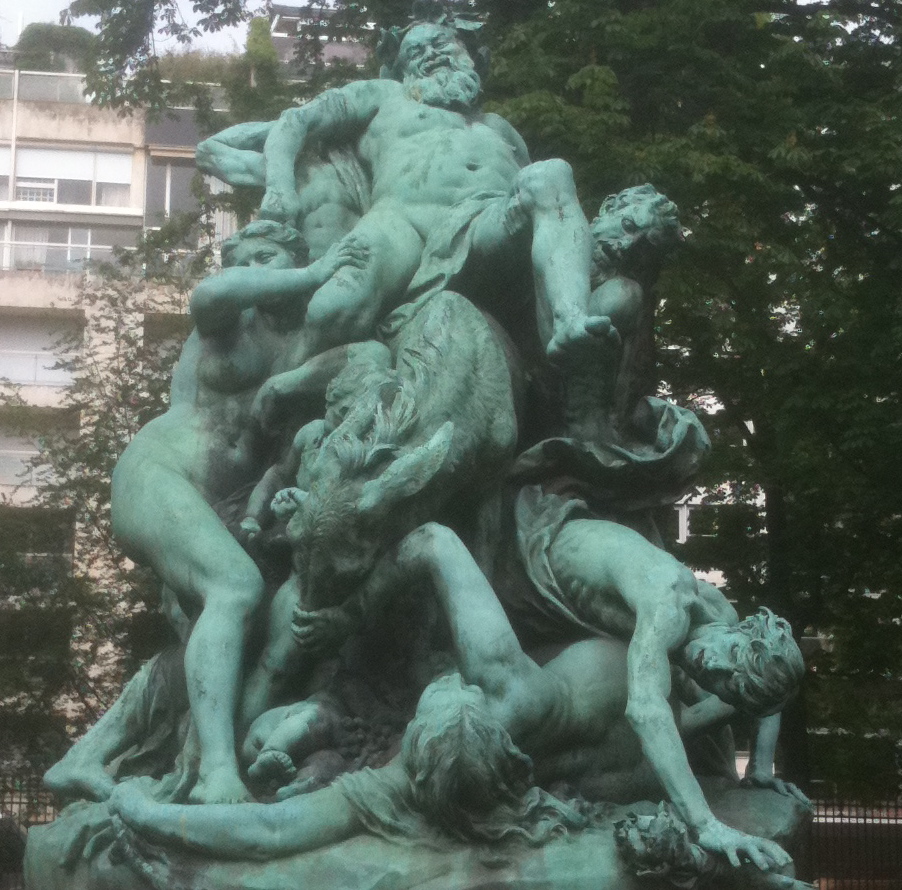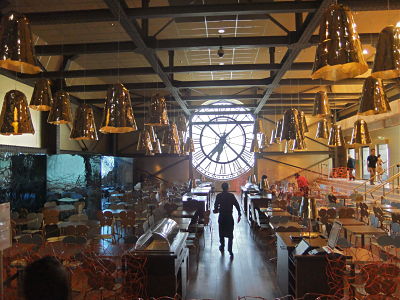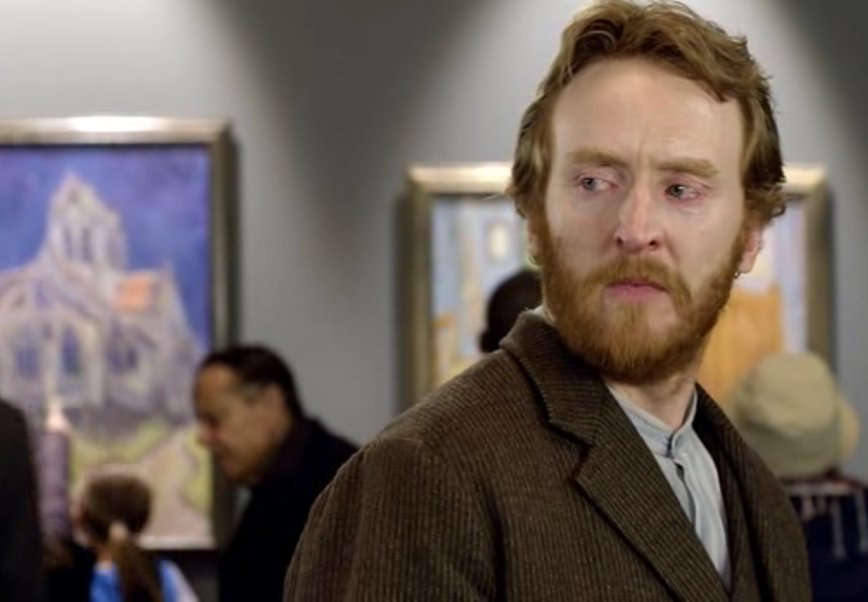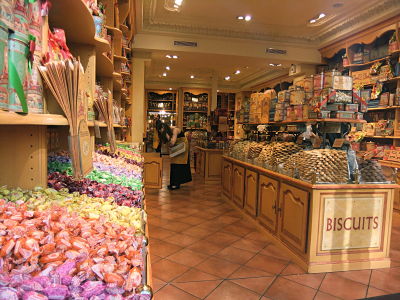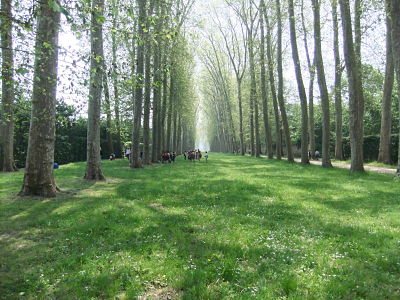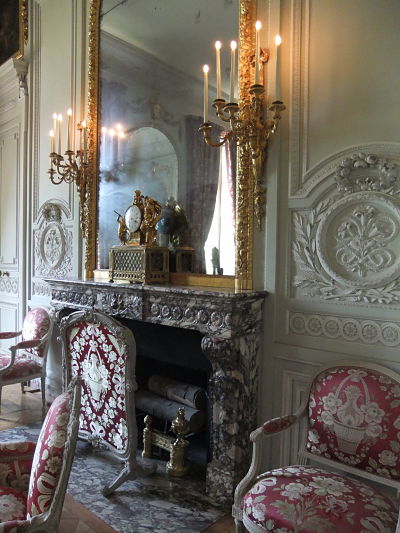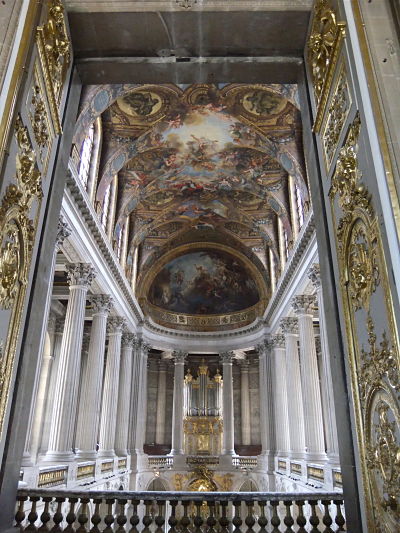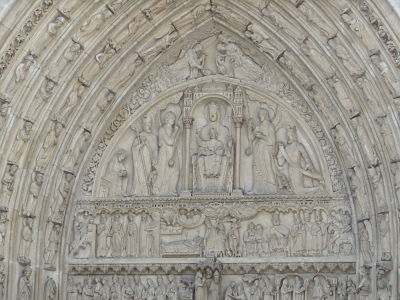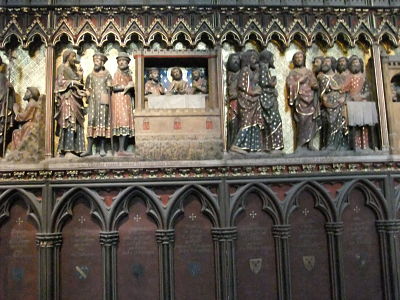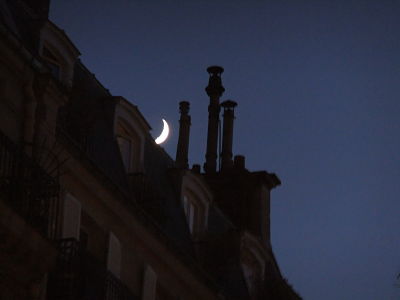How I Spent My Summer Vacation: Paris
/I am embarrassed to admit that I made my first visit to Paris in my mid-50s, after being told my entire life that Paris is the most romantic city in the world and after having my fascination with the French capital roused all over again by two great films produced last year – Martin Scorsese’s Hugo and Woody Allen’s Midnight in Paris. It would be hard to say that Paris surprised me, when you consider how many very particular images of the city have been etched in our imagination. I had many friends send along their recommendations for things to do while in Paris, many of which sounded very interesting and worthwhile, but ultimately, they were all things you should/could do on one’s second trip to Paris. The itinary for my first trip to Paris had been set in my head since I was 14 and taking a high school French class. As it was, despite pretty aggressive tourism, we still did not get to everything on our “Must See” list.
In the course of two action-packed days, we managed to visit Notre Dame Cathedral, eat lunch on a barge on the Siene River, walk along the Rive Gauche, stand underneath the Eiffel Tower and the Arch De Triumph, do some shopping along the Champs Elysees, stroll through the Jardin du Luxemboug, eat a croissant (actually, several), pay our respect to Shakespeare and Company, and gawk at the Paris Opera House (Home of Erik, the Phantom of Opera, though I could find no sign of an entrance to the sewers). We did not manage to get inside the Louvre, or visit the Arcades, or catch a performance at the Moulin Rouge or visit the cinema museum or take tours of the Paris sewers or the catacombs, all attractions which more or less insure that we will be coming back for more. We walked our legs off, but in the end, we saw very little that has not been seen by every other American tourist visiting the City of Lights over the past half century or more. It is hard to figure out what it is that I can say here that has not been said before.
This photograph, one of the few featured here which I took (as opposed ot my wife, who is by far the more gifted photographer) captures the festive spirit with which I embraced Paris. I thought it should be run with the caption, “Having a wonderful time. Wish you were here.” (I don't know, but I feel a certain family resemblance to the central figure here.)
By contrast, this image of a couple outside the Musee D’Orsay captures the way we felt at the end of each day – completely worn down by the onslaught on our senses and physical exhaustion from walking miles through the crowded city.
The Musee D’Orsay was one of the few places we visited in Paris which would not have been on my list in high school. This art museum was built inside the old train station which was so beautifully reconstructed (digitally) by Scorsese in Hugo, perhaps my favorite film last year. You can get a sense of the atmosphere of the museum from this photograph, which we shot illicitly, since shortly afterwards, we learned that photography was prohibited in this area. Shucks.
And behind the great clock, such a central feature of the Hugo promotional materials, there is a charming café where we stopped to have an Éclair and drink some orange juice.
We arrived late enough in the day that we had very limited time to study the artworks, though we did have time to pay our respect to the room devoted to the works of Vincent Van Gogh, a stop -- I hesitate to confess -- motivated as much by the role this room played in a episode of Doctor Who asby my serious appreciation of the great modernist painter. (What can I say, I am a fan boy to my core!)
In previous posts, I've shared with you snapshots of the junk food culture of Europe. I offer here, without comment, an image of a delightful little candy shop we encountered in Paris. Whatever else you want to say about the French, they bring Style to everything they do.
A highpoint of our time in France was a visit to Versailles, organized by Melanie Bourdaa (Bordeaux 3 University) ,who has been a major promoter of transmedia narrative in her country. Here, you see Melanie and I sitting together on the Palace grounds.
Again, I suspect Cynthia’s photographs can speak much more powerfully than I can about the epic scale and beauty of this grand palace and its extraordinary grounds. I had visited this palace many times before in my imagination, but I was still overwhelmed by experiencing it in reality.
Note the fireplace: one of my many visits to this place in my fantasies was sparked by another Doctor Who episode, "The Girl in the Fireplace."
Here, and everywhere else I went in Paris, I found myself confronting the degree to which elements drawn from stories – history, mythology, literature, scripture – were dispersed across every available surface. In many of the rooms in Versailles, one can stand and look up into paintings intended to evoke the heavens .
Many Paris buildings have architectural details (such as the gargoyles outside Notre Dame
or the lamp posts outside the Opera House) which are intended to evoke figures from myths and legends.
And Notre Dame manages to proclaim the Christ story from the sculpted doorways outside
to the stain glass windows inside.
I was especially intrigued by the ways Jesus’s life unfolds through a sequence of panels, which almost seem to predict comics.
I am convinced that someone smarter and more literate than me could develop a whole essay on immersion and dispersion in contemporary transmedia based on lessons learned from a more systematic study of the ways story elements are evoked around every corner in Paris.
For a more contemporary example of the ways the French embed their love of stories into the landscape, consider the love locks which have appeared, since the early 2000s, along bridges and fences in the city. Cynthia and I were unfamiliar with this relatively new practice, but a little time online suggests that it was inspired by the enormous popularity of the best selling novel, I Want You by Italian author Federico Moccia, which was later adapted into the film, Ho voglia de te. But even without a source text to refer back to, these locks each tell their own stories of the romances that they were designed to commemorate. The French government has struggled with how to respond to this truly grassroots phenomenon, which they see as obscuring their national monuments, but which resurfaces again as quickly as they are removed.
We made our way to the Pompidou Center several hours before my big public event and spent some time exploring this (in)famous building. Again, the debate about this space has become so entrenched that we all know the script by heart. Yes, it looks like “it is still under construction” and yes, it looks like “The Future.” Next question.
Before the main event, I spent some time being interviewed for a forthcoming documentary being made for French television called Call Me Kate, which uses Castle as a case study of a contemporary fan culture. The producer Emanuelle Wielezynski-Debats had brought along a range of French fan fiction writers, several of whom had participated in efforts to translate some of the key posts from this blog into French as resources for their community. There has been an explosion in recent years of documentaries about specific fan communities, which seek to avoid the anti-fan clichés that characterized much of the media coverage of the past. Emanuelle was using this production to “come out” as a Castle fan and saw the film as an opportunity to help inform the French public about fan cultural production.
My lecture, “Engagement, Participation, Play: The Value and Meaning of Transmedia Audiences,” was promoted by Sorbonne Nouvelle-Universite Paris 3 and supported by Orange’s Transmedia Lab. The program was introduced by Melanie Bourdaa and Eric Maigret (Sorbonne Nouvelle). This was perhaps the most heavily publicized talk in my lecture tour and there was a massive number of people more or less filling up the auditorium. I came out and delivered a few sentences of clunky high school French, before reverting to English.
Here you will find a video of the entire program, including a panel discussion afterwards where I was joined by Orange’s Morgan Bouchet, who had spoken at this year’s Transmedia Hollywood event. Orange has made a major investment in transmedia, including joining as a sponsor of the Annenberg Innovation Lab, where I am the chief advisor.
Bourdaa and her graduate student, Aurore Gallarino, wrote a very thoughtful summary of the event, which is worth reading. They write:
“In Jenkins’ view, five logics are contributing to the emergence of transmedia and the phenomenon of increased fan participation (‘fandom’):
- The logic ofentertainment, as evidenced by the presence in the US TV schedules of TV series and reality shows; -
- The logic ofsocial connection, highlighted by votes and discussions on social networking sites;
- - The logic ofexperts [Mastery], symbolised by the collective intelligence (Levy, 1994true) brought to bear by fans for the purposes of creation, production and discussion. Henry Jenkins cites the examples of the creation of Twin Peaks fan sites and the Lost Wiki (Lostpedia), which both collate articles written by fans to offer greater insight into both series; -
- The logic of immersion, which encourages participation. For example, on Oscars night fans could use a number of interactive tools to immerse themselves in the ceremony and form a community; -
- The logic of identification, which enables fans to establish an identity depending on what they watch.”
Just to be clear, these are not my categories. I was building on a framework my graduate student, Ivan Askwith, deployed as the frame for his Comparative Media Studies thesis a few years ago as part of a case study of the models of engagement around Lost. I have been experimenting with this model lately to think about the very different models of engagement shaping online extensions of American television series. You can read Askwith’s thesis here.
And here’s an interview I did with the French blogger Miss TrollMedia where I shared some reflections about what transmedia might mean in the context of French culture.
“Of course, the rich contents of French culture lend themselves to transmedia, although the desire to defend and close off those contents from outside influences also create challenges, since transmedia is at its roots participatory and generative. I would argue that some of the contents of French culture are already deeply transmedia. We could talk about the church culture which produced Notre Dame as one which was seeking every available channel from which to proclaim God’s Word and which embraced artists who remixed core icons and stories of their culture to create new works.
We could look at writers such as Hugo or Balzac as master world builders, who incorporated many existing stories into their works. So, Hugo sets his Hunchback inside the world of Notre Dame, thus extending the story it tells in new directions, where-as another author sets Phantom of the Opera in the basement and sewers of the Paris Opera House.
So, French culture has a long history of transmedia extensions and explorations, and there’s time for a new generation to enter into this process. But, in a networked culture, transmedia is not simply a conservative force, not simply about transmission, so having gone there, French culture can not work with a logic which treats the original author as a god or which seeks to police the borders of who wants to participate. You can transmit French culture to the world, but then, paradoxically, it will become world culture.”
My final event in Paris was a dinner with a circle of French academics, artists, and intellectuals who get together periodically to discuss game design and game study. I was invited to the dinner by Alexis Blanchet, whose data on the relationship between films and games I had featured on this blog several years ago. We were joined by Etienne Armand Amato, Sebastien Genvo, Vincent Berry, David Peyron, Nicolas Rosette, Olivier Mauco, and Marion Coville.
The group represented a broad mix of disciplines and perspectives, ranging from the aesthetics of interactive design to the place of computer games in the history of toys and play, from the political use of multiplayer games to the sociology of geek culture. Game studies has struggled to find an academic home in the French universities, but this multidisciplinary group of young scholars is bringing rigor and passion to the topic, teaching classes, writing both academic and journalistic games criticism and organizing and curating exhibitions for French cultural institutions.
As the sun sets slowly over Paris, we say goodbye to this romantic country, its gracious people, and its beautiful cityscape.
Coming Soon: Madrid and Barcelona.




